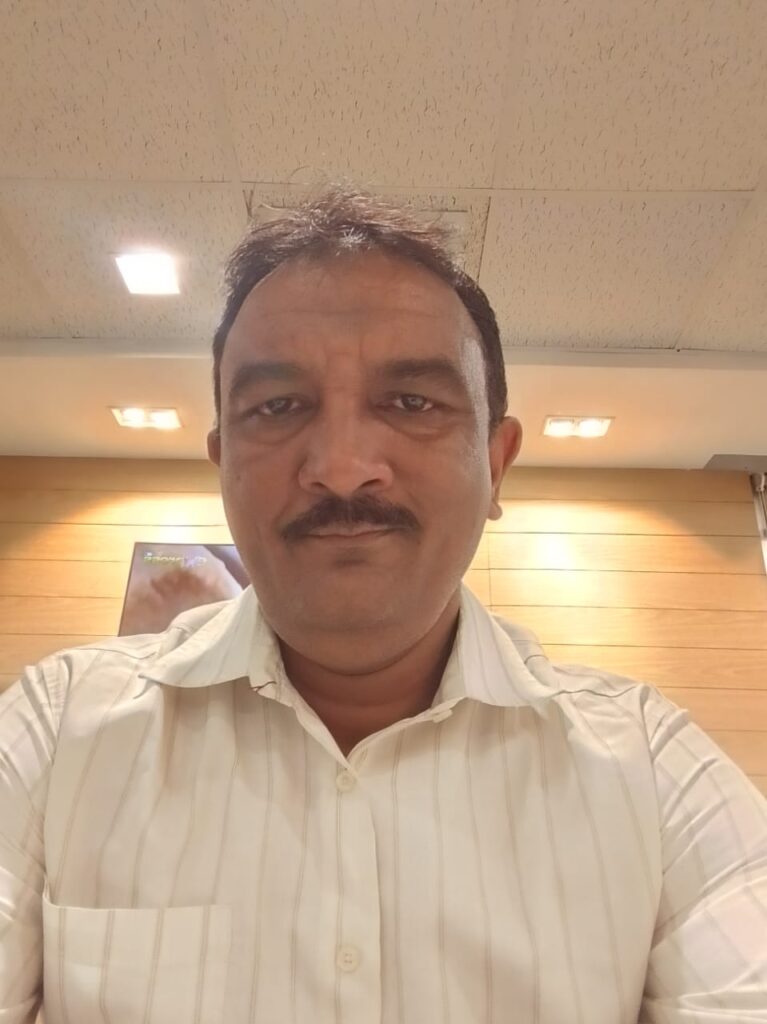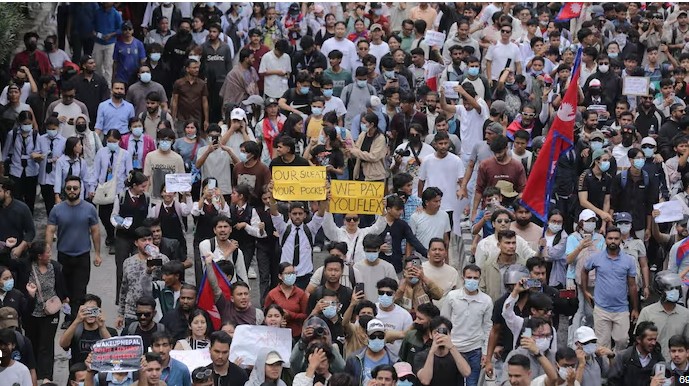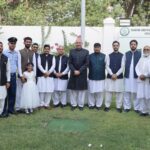By Kashif Hasan

The political storm that shook Kathmandu was more than a domestic upheaval; it was a warning to every South Asian state. When public anger crosses its limits, it can topple even the strongest thrones of power. On September 4, 2025, the Nepalese government abruptly banned 26 major social media platforms — including Facebook, YouTube, Instagram, WhatsApp, and X — citing non-compliance with regulations. The public saw it as blatant censorship.
That perception proved explosive. The ban triggered mass protests led by Generation Z, already frustrated with joblessness, corruption, and inequality. Under the WAKE UP NEPAL movement, thousands of teenagers and young adults poured onto the streets. Government buildings were set ablaze, media houses attacked, and flights at Tribhuvan International Airport grounded. The unrest claimed 19 lives, forced Prime Minister K. P. Sharma Oli and President Ram Chandra Poudel to resign, and left Nepal in the hands of a caretaker government.
The crisis underlined a crucial reality: in smaller states, when public fury surges to critical levels, state institutions often collapse under pressure. Could such a scenario unfold in Pakistan?
Pakistan’s Protective Pillars
Pakistan’s youth, like Nepal’s, rely heavily on social media for identity and expression. A sudden ban would trigger backlash. Yet, Pakistan’s military, judiciary, religious groups, bureaucracy, and media act as protective pillars, preventing unrest from turning into outright collapse. The army in particular plays a central role, often intervening to diffuse political turmoil.
In contrast, India’s state institutions — especially its judiciary and democratic framework — have historically absorbed public fury, even during movements like the farmers’ protest and the citizenship law agitation.

The Role of Media, Judiciary, and Economy
In both Pakistan and India, mainstream media serves as a pressure valve, often silenced or redirected during unrest. Social media fills that gap, but even here, governments retain tools like internet throttling and temporary shutdowns. The judiciary, though inconsistent, has at times steered both countries away from collapse — as seen during Pakistan’s lawyers’ movement and India’s post-Emergency checks.
Economic resilience also plays a stabilizing role. Pakistan has repeatedly avoided collapse through military alliances with global lenders, while India’s comparatively robust economy reassures its citizens of continuity despite political turbulence.
Religion and Ideology as Safety Nets
Religion and ideology have further contained mass unrest. In Pakistan, religious parties often redirect discontent, while in India, Hindu nationalist organizations fold popular grievances into the electoral process. Both mechanisms prevent revolutionary uprisings but do not erase public frustration.

The Lesson from Nepal
Nepal’s experience demonstrates the dangers of silencing youth voices. Social media bans may appear to solve immediate problems, but they widen the gulf between rulers and citizens. For Pakistan and India, the challenge is to strengthen institutions, fight corruption, and treat citizens as stakeholders rather than spectators.
Public consciousness in South Asia is rising. The youth are more aware, more restless, and more demanding. Censorship only fuels their anger. The only path to stability is to channel that energy constructively — by recognizing social media as a legitimate form of public power and building trust between the state and its citizens.
If not, Nepal’s fate could echo across the region.























